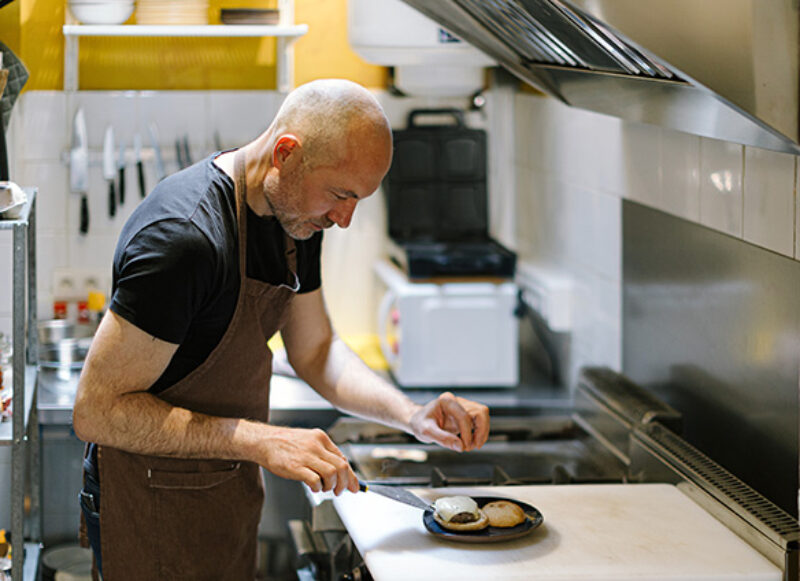Menu Engineering for Restaurants: Data-Driven Strategies for Smarter Decision-Making
May 19, 2025
May 19, 2025

By Ben Whitehead of SBTDC Boone/Hickory
In 2006, I bought a restaurant that was less than two years old at the time. After our first tourist season under my ownership, things got tight. Payroll came due, traffic slowed, and there was no money in our account.
A quick investigation revealed that our food costs were completely out of control. One item in particular was actually losing money every time it was ordered. We were, quite literally, paying people to eat it.
That experience didn’t make me an expert overnight, but it did make me realize that being a good cook wasn’t enough.
If I wanted the restaurant to survive, I needed to understand more than just cooking—I had to understand the business side and how the numbers worked.
A little later, I attended a separate seminar focused entirely on pricing. That’s where I first heard the four-cent question, which hit me hard.
“Would you hand every customer who walks in your door four cents?”
Like many restaurant owners, I had priced my menu items to end in .95. Clean, professional, familiar—or so I thought.
It was such a small number, but it forced me to rethink my pricing. That moment shifted how I saw our menu—not just as a list of dishes but as a strategic tool. It launched me into years of learning about how design, data, and psychology work together.
In one menu engineering session, I discussed the future of a particular dish with a chef and an owner. The chef immediately interjected that they believed this dish was a customer favorite and should stay.
But the data told a different story. It was underperforming. It was a dog.
What followed was a deeper discussion. If we remove it, will the ingredients be used anywhere else? Would we be left carrying unnecessary inventory? Could we simplify operations without hurting the customer experience?
That’s where menu engineering shines. It clarifies decisions that often rely on gut feeling and reveals hidden inefficiencies that add up fast.
Your menu is the only employee who communicates with every customer. It’s also one of your most underused tools.
A good menu does more than list dishes. It influences behavior, helps new guests discover what you want them to, supports the kitchen, and, when designed well, supports your bottom line, too.
In many restaurants, the menu is an afterthought—printed the night before opening. But if you’re looking for low-hanging fruit to improve profitability and efficiency, start there.
Menu engineering isn’t about telling chefs what to cook. It’s not about flavor. It’s about performance.
It’s the intersection of design, data, psychology, and operations. A thoughtfully engineered menu helps your best dishes stand out. It ensures that your pricing and layout support your goals—not work against them.
The best part? Watching clients have that lightbulb moment when they say, “That makes sense now that you point it out!”
(Sources: Forbes, Owner.com, 7shifts, MenuTiger)
It’s easy to launch a new menu and move on. But without benchmarks, it’s impossible to know what actually worked.
When you track the before and after of a menu change, you unlock much more than sales figures. You gain real operational insight.
Here are a few things to track:
Every menu change is an opportunity to improve—not just what’s visible to the customer but also what’s happening behind the scenes.
If you’ve never reviewed your menu from a performance perspective, you’re likely leaving money or time on the table.
Start with these questions:
You don’t need to change everything at once. Even a few intentional adjustments can lead to measurable improvements.
This is exactly what I cover in my menu engineering workshops. For those ready to go deeper, I offer one-on-one strategy sessions that explore layout, pricing, item mix, and operational impact.
Ben Whitehead is a General Business Counselor with the SBTDC. He helps small and mid-sized businesses grow revenue, improve operations, and make informed decisions. As a former restaurant owner who grew his business from $300,000 to $1.8 million in sales, he brings practical insight into business owners’ challenges today.
He specializes in menu engineering, pricing strategy, and data-driven operations planning.
If you think your restaurant could benefit from menu engineering, don’t hesitate to reach out.
SBTDC services are no-cost and confidential, and we regularly host workshops that dive deeper into topics like menu design, pricing psychology, and operational strategy.
